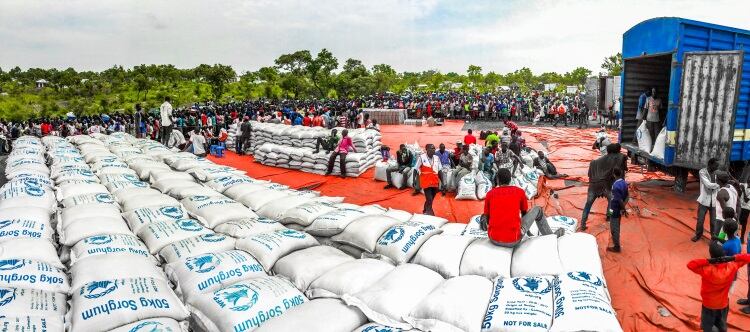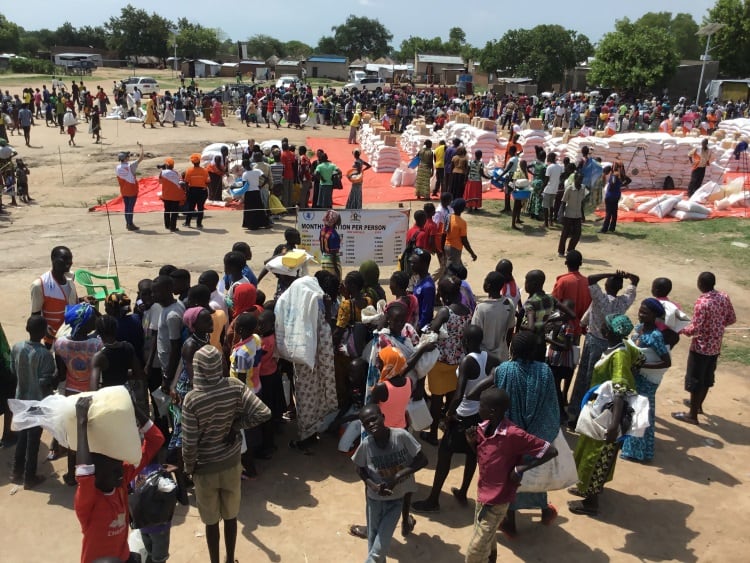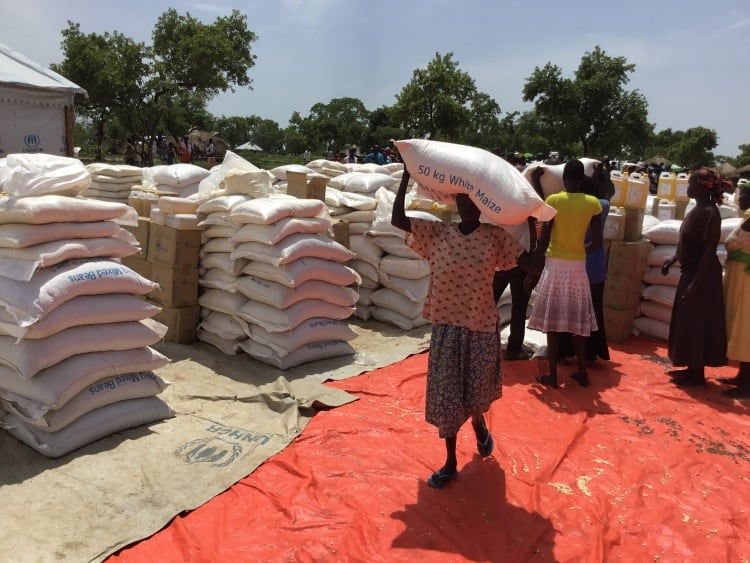The Food ATM – which won a slot on WFP’s Innovation Accelerator last year as a ‘game-changing’ idea to tackle global hunger – is an automated dispensary providing continuous, monitored commodities in a single, on-demand solution.
The typical basket of commodities will include maize, beans, oil, sorghum, pulses, corn soy blend (CSB) and so forth.
Just one Food ATM is expected to improve nutrition and safe access to food assistance for thousands of refugees.
Implemented at scale, it could be a global solution to food loss for hundreds of thousands of refugees.
WFP’s Nairobi Regional Bureau in collaboration with WVI developed the cost-effective idea for the Food ATM.
Proposed solution
Chris Hoffman, World Vision’s East Africa humanitarian and emergency affairs director, told BakeryandSnacks the initial pilot will be rolled out within the next six months in Uganda and possibly, South Sudan.
“The proposed solution is to place a Food ATM eventually at every distribution point filled with bulk commodities that have been locally procured,” he told us.
He added the machines have the potential to eliminate some of the biggest problems associated with providing food to refugees.
“This would be enabled with SCOPE Card access (or other) that would give each beneficiary access to their monthly rations through this On-demand Food ATM. The repackaging/packaging process would be completely removed from the supply chain.”
Multiplier effect
WVI has found that at least 30% of food baskets are either mishandled, lost, sold, stolen or wasted before getting into the hands of refugees.
How will it work?
The Food ATM consists of a number of machines that each contain a specific food item, for example, one for cereals and another for cooking oil.
The plan is to house them in a ‘clean, cool warehouse’ within the camp that refugees can visit whenever they want.
Refugees can fill their shopping carts with as much or as little of each food item as they want within the limit of their pre-funded SCOPE card – a WFP digital cash card that is reloaded monthly.
The machines will strengthen the local economy in an ‘Africa for Africa’ approach, as they will be stocked with locally procured foodstuff, and maintained and filled by local people trained by WFP and WVI.
“The proposal includes a knowledge transfer through training of field staff, which will in turn lead to an increasingly skilled labor base surrounding these Food ATMs,” said Hoffman.
Then there is the concern of spoilage and disease, as most refugees do not have appropriate storage systems, like refrigerators.
Additionally, the entire process is very costly for humanitarian agencies as food is typically sourced internationally, then transported thousands of miles and repackaged onsite.
Conversely, the benefit of the Food ATM are numerous.
Refugees will also no longer have to wait in long lines for their monthly rations or run the risk of running out of food.
The machines will be stocked with locally procured foods, which supports the local economy and reduces the carbon footprint.
The ease of access means that refugees will be able to make independent decisions on when and how much food they are able to carry and safety store at home. The on-demand distribution also makes it harder for robbers to know when refugees will be collecting food.
It also contributes to increased nutritional intake due to decreased food loss and less chance of food waste or rotting.
It will also allow WFP to better track what kinds of food and how much of it refugees are actually using in order to make the aid more personalized.
“The data would also allow for a better understanding of beneficiary habits, usage, refill amounts and needs,” said Hoffman.
Through cost savings, more funds will be available to WFP and WVI to help affected people in more effective ways.
Zero hunger

“These long-term transformational benefits, together with the direct benefits of improving the local supply chains, will furthermore add to our aim of Zero Hunger by ensuring long-lasting development along the humanitarian-development-peace nexus.
“Additionally, the multiplier effect of this operation will be the development of local economies, improving food supply chains and value chains, improved GDP, knowledge and skills transfer leading to a highly skilled labor base and decreased environmental waste.”
Power back to the beneficiaries

However, introducing the Food ATM will not been plain sailing, said Hoffman.
The new idea may not be ‘culturally accepted’ by refugees.
“This is a new idea, and many of them have been receiving food in standard ways for many years,” he said.
It could also a source of controversy among partner organizations.
The efficiency of the machines have the potential to dramatically cut staffing needs and will require an overhaul of policies and procedures required under the current system.
But, if all goes well during the pilot, World Vision and WFP plan to launch five more Food ATMs by the end of 2020 and throughout East Africa over the next two funding cycles.
“Through this solution, the power would be brought back into the hands of the beneficiaries, turning them from powerless actors into clients with specific demands,” said Hoffman.
“This demand could, in turn, be a stimulus for the local economies and, as such, catalyze economic growth.
“This would force WFP, in turn, to look at the people we aim to assist as clients or customers.
“Moreover, reduced packaging materials and reduced shipping will reduce the environmental footprint of WFP,” the WVI director added.





